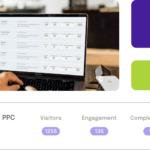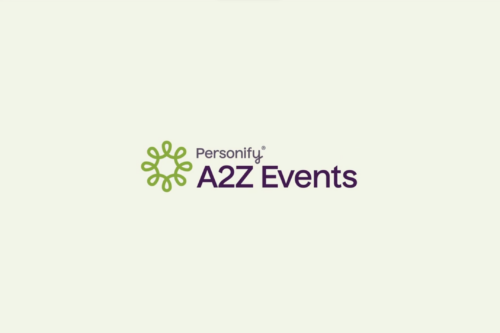Planning an event involves a lot of work, thinking, and steps. There’s a ton that goes into each step, and that’s why it’s sometimes easier to consume advice and tips in more digestible chunks.
Instead of reading an entire encyclopedia on event planning in one sitting, you can target each facet of the event. Today, you can look specifically at event registration and some better ways to think about it.
What Is Event Registration in the First Place?
When you plan an event, registration is the process by which you secure attendance. Events come in many shapes and sizes, so even registration can change from one event to the next, but there are some universal principles.
If you charge any kind of attendance fees for the event, then registration is typically where you collect money. At the same time, you typically also collect information for the attendees, such as their name and contact information.
Registration can include other facets of information gathering, but these are the essentials.
To boil all of this down to the simplest form, event registration is the process you use to manage event attendance.
20 Tips for Improving Your Event Registration
With that out of the way, let’s get right into it. These seven tips will help you maximize your event registration process.
Create a Consistent Look and Feel
Make your online event registration form match the look and feel of your website. A consistent look helps registrants feel comfortable with the process and looks professional. Use the same branding elements as your logo, color scheme, and font styles. This creates a seamless experience and builds trust that the registration form is an official part of your event website.
Provide Clear Cancellation and Transfer Policies
Have a clearly visible and friendly cancellation and refund policy. Transparently communicate your policies upfront before someone registers. If you don’t want to offer refunds, at least allow people to transfer their registration to someone else easily. Provide simple instructions on how to cancel or transfer. This flexibility increases registrations by removing risk for attendees.
Offer Customer Support
List a name and phone number of a real person registrants can contact if they have questions. Most people won’t call, but they like to know the option is there if they need assistance. Having a support contact demonstrates you value good customer service. You can also include an email address or online chat option.
Keep Registration Options Simple
Don’t offer too many registration options. If people have to spend time thinking about what to select, they may decide to come back later…or never. Too many choices can lead to option paralysis. Only include registration types that are absolutely necessary, like different rates for members vs non-members. If you have complex offerings, break them into simple packages or bundles.
Only Ask for Necessary Attendee Details
Only ask for individual ticket holder names when you really need them. Asking for the name of each ticket holder complicates the purchase as most of the time people don’t know the names, and if they do, they often change before the event anyway. Only require specific attendee names if it’s critical for your event, otherwise allow placeholder names initially. You’ll always have the opportunity to collect further information when attendees collect their badge onsite.
Automate the Payment Process
Make the form do the price calculation based on the selections people make. It’s easier for the registrant and you can trust the math to calculate totals accurately, including any taxes or fees. Automatic calculation avoids mistakes and makes the purchase experience smoother.
Minimize Account Creation Requirements
Don’t require people to create an account before they can register. Why would someone want to sign up with an online registration provider and give their information to another company just so they can register for your event? Allow for guest checkout to streamline the process. You can optionally let them create an account after successful registration.
Keep the Form Uncluttered
No ads and no Flash – the goal of the form is to get people to click the “register” button at the bottom of the form and you don’t want to distract them in any way. Plus, ads on forms are tacky. Remove any excess visual elements that could distract from the registration process. The form should have a clean, focused design to guide users through checkout seamlessly.
Test for Cross-Browser Compatibility
Test your form in different browsers, especially if you have people using outdated browsers. What looks good or works in one may not in another. Ensure your registration form displays and functions correctly across all modern browsers, as well as older versions used by some of your audience.
Conduct Usability Testing
Get the least computer savvy person you know, or at least someone who hasn’t seen the form before, to try to register while you watch. You might be surprised by what stops or confuses them. Observing real people attempt to complete the process can reveal areas of confusion or friction you didn’t anticipate. Incorporate this feedback to improve the overall user experience.
Enable Guest Checkout
Allow users to checkout as a guest without having to create an account first. Many people are reluctant to create yet another account just to register for an event. Make it easy by letting them enter their name, email and payment details without extra steps. You can optionally let them create an account after checkout for managing their registration.
Use Clear Call-to-Action Buttons
Make the call-to-action button text obvious like “Register Now” or “Get Tickets”. Don’t use vague language that could confuse users on the next step. The main button should be a contrasting color that stands out from the rest of the form. Use easy-to-understand action words.
Implement Smart Form Fields
Use intelligent form fields that provide examples and validate entries. Show placeholder text giving examples of the expected format. Validate fields in real-time as the user types to prevent errors. Smart fields increase completion rates.
Highlight Early Bird Pricing
If you offer early bird discounted pricing, make it visually prominent. Create a sense of urgency by displaying a countdown timer and listing the date when early bird ends. You can use early bird discounts to create sales pressure and improve your attendance and conversion rates. This encourages people to complete their purchase sooner.
A word of caution, never offer a discount you can’t actually afford. If that’s the case, invert the idea and think of timed price markups. So, your initial price is whatever you calculated to be the right price for attendance. Then, you mark that price up according to your schedule. Just remember the presentation. Later sign-ups are not getting charged extra. Early sign-ups are getting a discount. It’s all about framing.
There are two ways to time discounts. You can discount according to the number of tickets sold, or you can do it on an actual timer (of hours, days, weeks, months, etc). You can also mix and match these ideas. The point is that you’re in control, so you can set a discount schedule that works for your event and pricing.
Optimize for Mobile
Ensure your registration process is mobile-friendly and responsive. Many people will register for events from their smartphones or tablets. Use a clean, thumb-friendly design with large touch areas. Minimize scrolling and error-prone typing on smaller screens.
Streamlined Event Registration Forms
Event registration starts with the forms you use for the process. How do people sign up for the event? How do you collect information? How do you certify registration and all the rest?
Typically, the answers to those questions condense into your registration form. Assuming it’s digital, you want to simplify the form and minimize the amount of data attached to it while maintaining its utility.
This will accomplish a couple of goals.
First, you will reduce the amount of digital data needed to process the form. This helps it load and process faster. Faster event forms improve conversion rates, leading to higher overall attendance.
According to an SEO research group in the UK, 53 percent of mobile users will abandon a site if it takes longer than 3 seconds to load. That applies to your registration form too. Simpler forms load faster to help solve this problem.
Second, a simplified registration form is more palatable for users. If there’s too much information and everything is dense and hard to follow, many will give up before finishing. Simpler forms get better completion rates.
So, how do you simplify the form? A couple of principles can guide you:
- Minimize clicks to reach and complete the form
- Include only essential information (name, email, company if needed)
- Provide key event details concisely (when, where, cost, organizer)
- Keep event details under 140 characters
- Avoid unnecessary selling points on the form
- Use website and social media for promotion instead
Crafting an Effective Event Website
Here’s a more concise rewrite for a blog section on event registration management tips, incorporating a short list:
While simplifying the registration form, your event website becomes the primary resource for attendee information. Striking the right balance is crucial:
- Keep everything within 1-2 clicks from the main page
- Split details across linked pages (highlights on main page, specifics on separate pages)
- Utilize visual aids judiciously:
- Showcase photos/videos from previous events
- Use illustrations/renderings when necessary
- Highlight the best visuals; organize others on additional pages
The event website should complement the streamlined registration form, providing comprehensive details without cluttering the user experience. Prioritize ease of navigation, strategic content organization, and a visually engaging yet focused design.
Use Creativity in the Event Registration Page
Your event registration page and registration form are not necessarily one and the same. They might be, but let’s remember that the registration page could just be the last stop before you load the form. If you can consolidate the two, that’s fine. All of the content in this tip will still apply.
When you add creativity to registration, you capture more attention and improve conversions.
As for how you do that, it starts with the brand. You already have your event in mind. Use your brand and event imagery on the registration page. That helps it look like its own thing instead of some other generic web page.
Of course, you can do a whole lot more.
One of the most engaging creative elements you can add to registration is gamification. This is where you turn registration itself into a game.
Here’s an example:
Consider a financial services summit. On the registration page, include a “Future of Finance Challenge.” Ask participants to submit a brief proposal or video on their vision for the future of the finance industry. Showcase these submissions on the event’s website and allow attendees to vote for their favorite ideas. The top proposals are presented at the summit, and winners receive a special recognition or prize. This not only engages registrants but also fosters innovation and highlights forward-thinking ideas within the finance sector
You can apply this concept to any event. Anything that you can make into a friendly competition works great. You can create event-based bingo cards, scavenger hunts, or whatever else sounds fun. If nothing else, you can put door prizes or a raffle into the registration process. Now people have a chance to win something just by registering. That’s always a little more fun.
When you gamify, remember to minimize clicks. Whatever game you utilize should just be one click away from the registration page itself. In some cases, you don’t even need an extra click.
Aside from gamification, you can steer into other creative elements.
You can add social links that help attendees plan meetups, share rooms, and otherwise connect with each other before and during your event.
Giveaways, discount codes (such as for vendors or nearby places to eat), and even links to related social media groups all fall into this category.
Leverage Social Media
Social media remains one of the most powerful tools (a suite of tools, really) for outreach. If you want to create buzz, engage your audiences, and convert excitement into event registration, focus on social media.
In that vein, these ideas will help.
Begin with your call to action. Every post should have a purpose and a call to action, but remember that these posts are not the registration page. By all means, plenty of posts will link directly to registration, and registration is the call to action.
But, that’s not the only way to use social media. Sometimes simply calling for people to share the post is enough. That still boosts awareness and engagement, even if you aren’t directly calling for registration.
When appropriate, you can have more than one call to action as well. It’s all about selecting the purpose behind the post and going from there.
Beyond your calls to action, you can also boost awareness with targeted advertising. Social media is the best in the business at this kind of thing. Even a conservative ad campaign can expose your event to many more people. Combined with your calls to share, you can gain momentum rapidly.
Lastly, remember engagement. A post that advertises the event is fine, but what about a post that asks people to vote on what guest speakers or booths they would like to see? Anything that directly entices an audience response will enhance engagement, and that boosts your visibility on social media algorithms.
Put it all together, and you can create a powerful social media campaign.
Follow-ups and Event Reminders
The next tip takes place after people complete the event registration process. What happens next?
They should get an automated confirmation email. If they gave you money, they need a digital receipt as well (those can be consolidated into a single email when it makes sense to do so).
That’s not the end.
You want to send periodic reminders to registrants. Those reminders help them make sure they are ready for the event. They also give you opportunities to advertise new developments for the event. With any information revealed, you can include a call to action that encourages attendees to share the event with others.
You can even include discount codes and the like to boost this kind of email sharing.
Better yet, make calendar notifications that are compatible with Google and Apple calendars.
The more you can engage with people who have registered, the more they can get the most from the event. Additionally, they’re more likely to share with others.
As you do follow-ups, remember one thing. There is a fine line between expanding value for your attendees and outright spamming them with junk. Every email or contact should have a purpose, and you should still always try to streamline the experience for your users.
If you aren’t sure where the line is, simply use yourself as a proxy. At what point would you feel like you’re being spammed? It’s a strong place to start.
Utilize Event Registration Software
The last tip revolves around software. You’re doing this digitally, so you need digital tools.
There’s a lot you might want for your specific event, but there are also a few features that help everyone in the business:
- Attendance tracking
- Participation management
- Insights and data
- Form building (to make your registration form)
- Participant admin panel
- Integration with other software
- Promotional tools like auto-publishing
- QR code generation
If your software includes these essentials, you’re in good shape. Look for particular features that you like in addition, and you’ll end up with software you love. If you don’t know where to start, consider this a recommendation for A2Z Events. It’s a full software suite that includes powerful registration tools in the bundle.
Conclusion
Those seven tips can help you think about your event in terms of registration. You can make the best possible experience for your attendees while boosting performance numbers. While each tip contains some golden nuggets, they all point back to the same root concept: streamline the experience.
If you keep the user experience front and center, you will plan a better event, and you will create a superior registration process.
If you gained anything from these event registration tips, then stay tuned for more tips that can help you with engagement and other event planning solutions.










